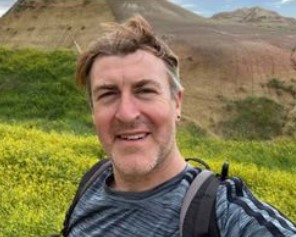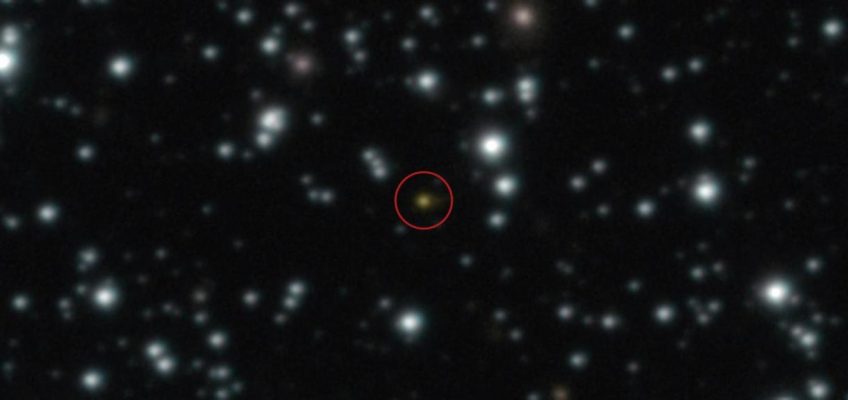By CHRISTINE FERNANDO, JOHN O’CONNOR and SOPHIA TAREEN
CHICAGO (AP) — The streets in some of Chicago’s liveliest neighborhoods are quiet these days. Public schoolteachers want online learning for families scared to venture out. And houses of worship are urging people to carry identification everywhere they go.
Plans in the works for Korean workers detained in raid to go home while fear lingers for residents
Alex Jones asks U.S. Supreme Court to hear appeal of $1.4 billion Sandy Hook judgment
Supreme Court to quickly consider if President Donald Trump has power to impose sweeping tariffs
Chief Justice Roberts keeps in place Trump funding freeze that threatens billions in foreign aid
Top US immigration official defends rule targeting ‘anti-American’ views in green card, visa process
As the nation’s third-largest city awaits a much-hyped federal intervention, residents are making changes in their daily routines. President Donald Trump has promised Chicago will see a surge in deportations and National Guard troops as he targets Democratic strongholds. While the feeling of being vulnerable isn’t new, especially among immigrants, many say this time the fear is deeper and the preparations more drastic.
Even Sam Sanchez, a Chicago restaurant owner who voted for Trump, criticized the Republican’s plans for the city. As a naturalized U.S. citizen from Mexico, he is also taking precautions.
“They’re profiling,” he said of federal agents. “My wife and I went to a wedding and I told my wife, ‘Bring your citizenship papers.’ ”
Slower business traffic
There is a noticeable drop in street food vendors in Chicago’s Little Village neighborhood, and businesses report less foot traffic. The largely Mexican enclave features a two-mile stretch of businesses and restaurants that is often noted as one of Chicago’s highest-grossing shopping districts after Michigan Avenue.
“The streets that were busy are dying down,” said Galila Mendez, 25, who visits from the suburbs.
The neighborhood has been subject to immigration enforcement before.
People hold a Chicago flag as they gather near Daley Plaza, Monday, Sept. 8, 2025, in Chicago. (AP Photo/Carolyn Kaster)
Residents are quick to recall a 2007 daytime raid that locked down a popular shopping mall and increased enforcement in 2019 during Trump’s first term. Another wave of trepidation came in January when the Trump administration launched a nationwide operation from Chicago.
But things feel more intense now.
Xochitl Martinez, who has sold clothes in the area for about 20 years, said that since Trump’s second term, the streets are “dead.”
“If Trump wants to be intelligent, he has to support Latinos so we can work, so stores can open, so more sales can happen, so we can prosper more and lift up our families and lift up the country,” Martinez said.
Celebrations for Mexican Independence Day, which Chicago commemorates for weeks with car caravans, parades and festivals, have been muted. One festival was canceled while others added security.
Immigration attorneys say their clients are afraid to attend appointments, including at court. Churches with large immigrant populations are starting to notice an attendance dip.
Fabio Fernandez, owner of 3W-We Will Win, an art and T-shirt company in the predominantly Latino Pilsen neighborhood, said a mood of anxiety and uncertainty permeates. He has seen fewer customers.
“We shouldn’t fear or feel like we can’t walk the same streets that we usually roam,” he said.
Recent arrests
Fueling Chicagoans’ fear is the lack of information about what the Trump administration plans to do.
Calls to an activists’ emergency hotline to report immigration arrests have jumped in recent days, including details that couldn’t be confirmed or were mistaken.
“The deportation machine has always existed for decades,” said Antonio Gutierrez with Organized Communities Against Deportations. “This feels unprecedented.”
People stop to take pictures of signs posted on windows at a clothing store during the 2025 Pilsen Mexican Independence Day parade Saturday, Sept. 6, 2025, in Chicago. (AP Photo/Carolyn Kaster)
A handful of weekend immigration arrests launched the city’s vocal immigrant rights groups into action. Activists said five people in a predominantly Latino area, including a longtime flower vendor, were targeted by armed and masked federal agents.
Federal officials said the arrests were part of ongoing U.S. Immigration and Customs Enforcement activity and resulted in the detention of four people with previous criminal arrests. The arrests came a day before the Department of Homeland Security announced a new operation in Chicago because of its so-called sanctuary laws, which limit cooperation between local police and federal agents.
It was unclear what role the operation would play in the broader threats of federal intervention, but activists and elected officials said it felt like things were ramping up.
“They’re gathering steam,” Illinois Gov. JB Pritzker said Tuesday.
Pritzker and Chicago Mayor Brandon Johnson object to any federal surge and have promised to sue.
Some Chicagoans carry passports
Attorneys and activists have encouraged immigrants to carry documents and share their whereabouts for months. The message has spread recently to U.S. citizens and in Black and LGBTQ enclaves.
Vianney Alarcon, 42, says she has started carrying her passport when she leaves her North Side home. Her parents keep their green cards with them.
Protesters gather in Daley Plaza, Monday, Sept. 8, 2025, in Chicago. (AP Photo/Carolyn Kaster)
“It’s just disheartening,” she said.
Roughly 20% of Chicago’s 2.7 million people are foreign born. Most come from Mexico, China and India, according to Census estimates. Racially, white, Black and Latino residents each comprise roughly one-third of the city, with a smaller number of Asian residents.
A group of pastors, imams and rabbis urged all residents this week to carry identification, film encounters and protest. The guidance comes after the U.S. Supreme Court lifted a restraining order barring immigration authorities in Los Angeles from stopping people solely based on things including race.
“We will fight for this city,” said the Rev. Otis Moss III of Trinity United Church of Christ, the influential Black church once attended by former President Barack Obama.
Teachers want online learning
Despite the widespread unpopularity of remote learning, the Chicago Teachers Union wants schools to offer it for students who fear being targeted by immigration agents.
Union President Stacy Davis Gates said Chicago should follow Los Angeles’ lead; the city’s schools offered offering online options amid an immigration crackdown earlier this year.
“Because they had the infrastructure for online learning they were able to direct young people to those spaces,” she said.
Chicago Public Schools leaders said the district will continue classes in person, but they will reassess as needed.
“In-person instruction continues to provide the strongest foundation for learning,” officials said.
In letters to parents, district officials have reiterated that schools don’t coordinate with U.S. Immigration and Customs Enforcement or ask for immigration status. School leaders noted that children who felt unsafe walking home could duck into a church or firehouse and create neighborhood text groups.
Teachers in the district that is predominantly Black and Latino have been passing out flyers informing families of their rights.
“We know that being informed is the best way to empower our communities to stay safe,” said Linda Perales, a special education teacher.
Associated Press writers Melina Walling and Laura Bargfeld in Chicago contributed.




